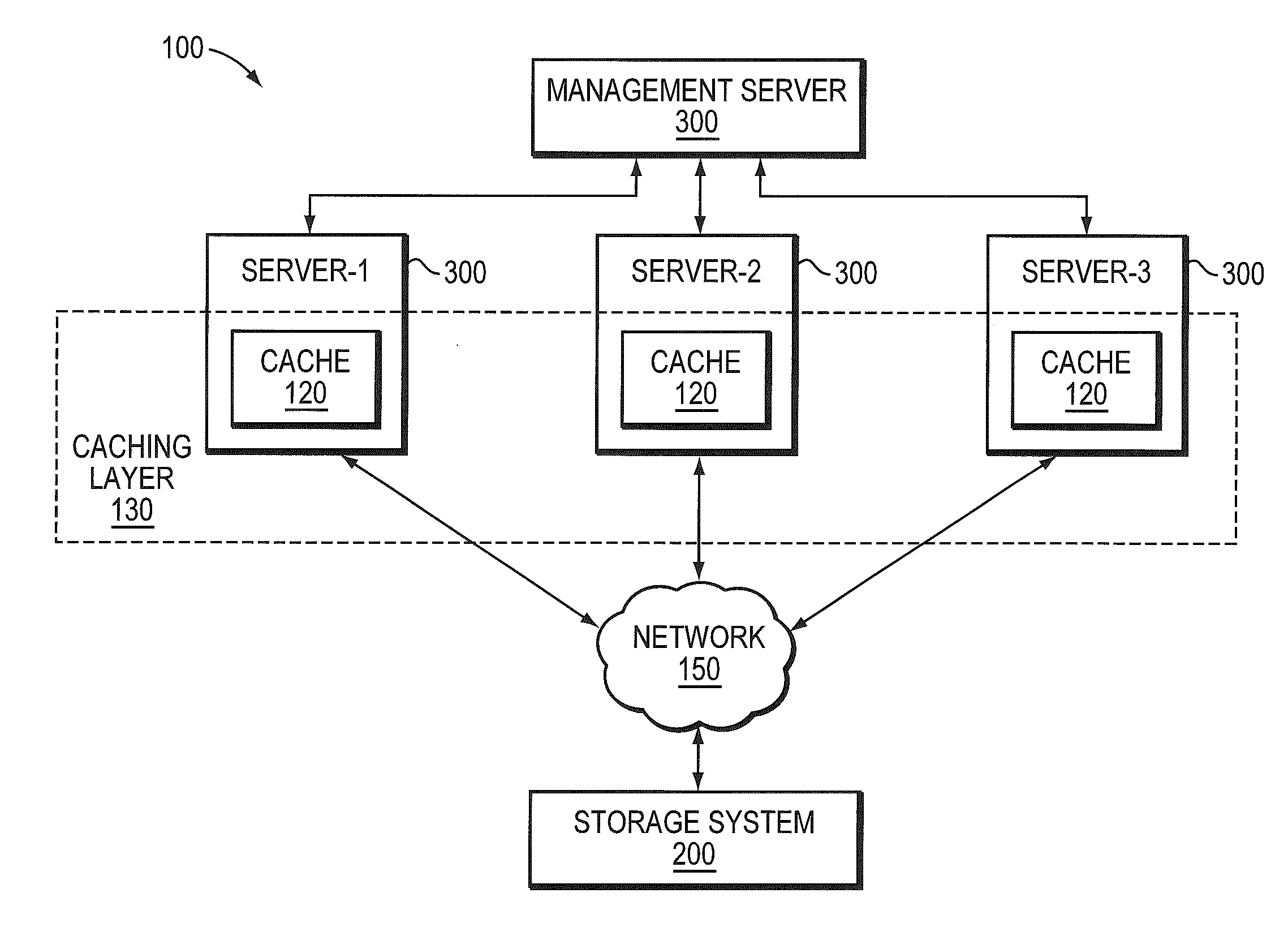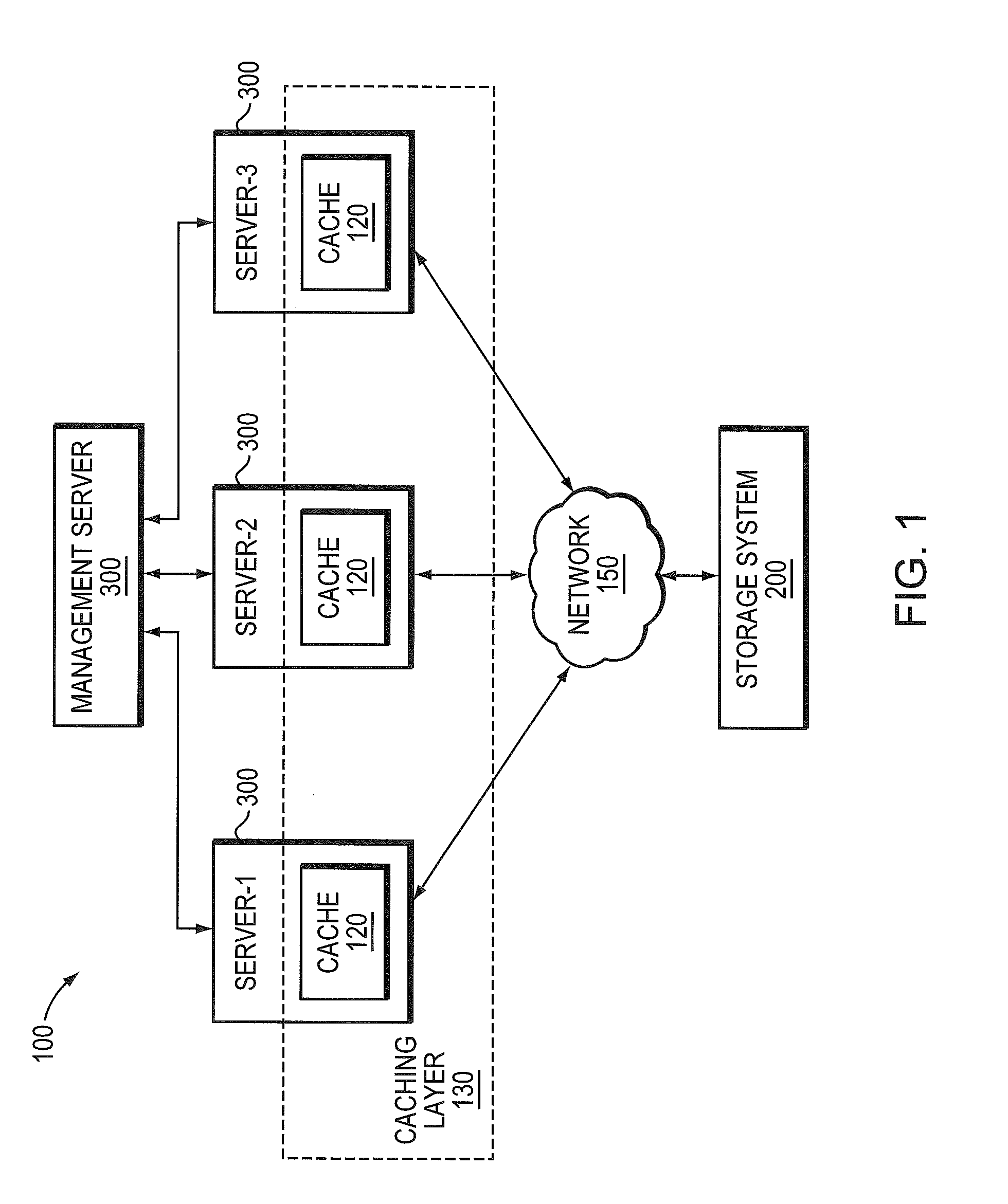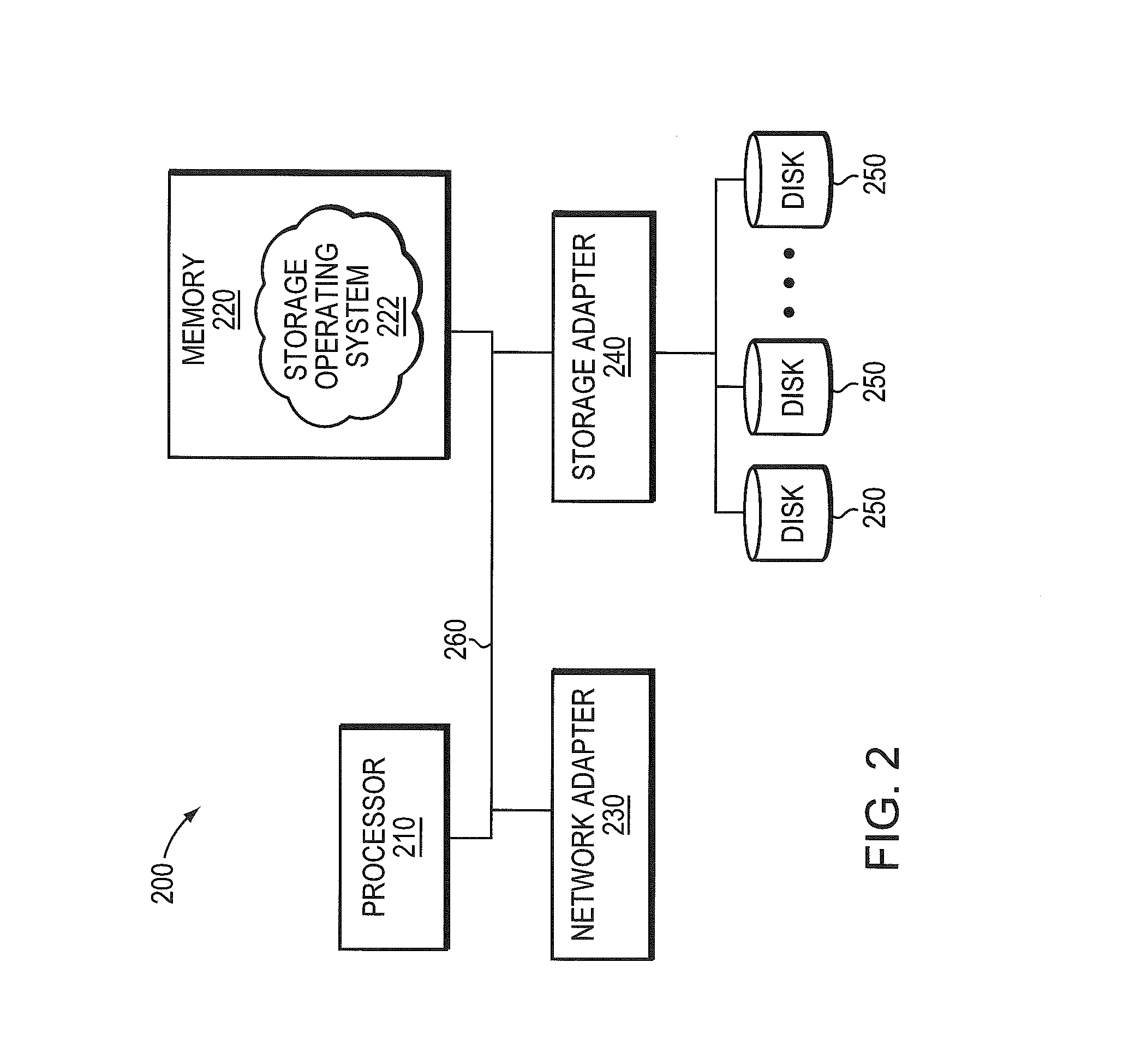Dynamic caching technique for adaptively controlling data block copies in a distributed data processing system
a data processing system and dynamic caching technology, applied in the field of data processing systems, can solve the problems of adversely affecting throughput and performance, lack of data management features, adversely affecting device and server throughput, etc., and achieve the effect of increasing or decreasing the number of cached copies and greater flexibility
- Summary
- Abstract
- Description
- Claims
- Application Information
AI Technical Summary
Benefits of technology
Problems solved by technology
Method used
Image
Examples
Embodiment Construction
[0029]FIG. 1 is a block diagram of a distributed data processing system 100 that may be advantageously used with one or more embodiments described herein. The distributed system 100 may be organized as a plurality of servers 300, including a master server (“management server”) and a cluster of slave servers (“servers 1-3”), connected to a storage system 200 by a network 150. The network 150 may include a point-to-point link, a shared local area network, a wide area network or a virtual private network implemented over a public network, such as the well-known Internet. The distributed system 100 may be used to process and analyze large datasets by partitioning the datasets into blocks of data for distribution and storage among local storage devices of the servers 1-3. The local storage devices may be embodied as caches 120 configured to provide a caching layer 130 of the distributed system 100. An example of a distributed system that is configured to provide a caching layer and that ...
PUM
 Login to View More
Login to View More Abstract
Description
Claims
Application Information
 Login to View More
Login to View More - R&D
- Intellectual Property
- Life Sciences
- Materials
- Tech Scout
- Unparalleled Data Quality
- Higher Quality Content
- 60% Fewer Hallucinations
Browse by: Latest US Patents, China's latest patents, Technical Efficacy Thesaurus, Application Domain, Technology Topic, Popular Technical Reports.
© 2025 PatSnap. All rights reserved.Legal|Privacy policy|Modern Slavery Act Transparency Statement|Sitemap|About US| Contact US: help@patsnap.com



